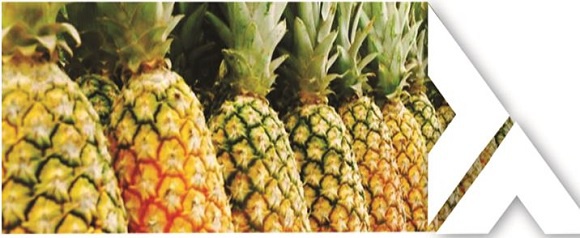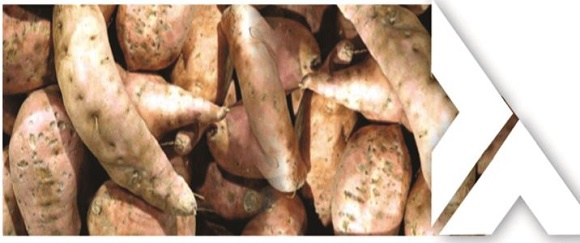Even as uninformed scepticism has arisen, Ghana’s EXIM Bank is quietly but fundamentally transforming the country’s economy into one driven by private sector led industrialization, utilizing local inputs while substituting imports and diversifying non-traditional exports. TOMA IMIRHE and ELORM DESEWU examine how this state owned development bank is empowering the private sector to transform the structure of Ghana’s economy.
Within one year of its establishment, resulting out of the consolidation of three state owned institutions – (Export Trade Agricultural and Industrial Development Fund (EDAIF), Export Finance Company Limited and Eximguaranty Company Limited), the Ghana EXIM Bank is already heavily involved in the financing of initiatives that are profoundly changing the structure of the country’s economy. The merger between these three state owned institutions was facilitated by USAID.
The Bank was set up by Act 911 in 2016 to facilitate the country’s international trade and promote its capacity and competitiveness in the international market place.
The Bank’s 5 year strategic goals (2017-2022) are to increase revenue from non-traditional exports from its current average of USD 2.4Billion to USD 5 Billion, develop crops such as avocado and cashew into major export products, reduce the nation’s import bill for poultry by USD 300 Million to become a key finance partner for effective implementation of Government initiatives such as One District One Factory (1D1F) and to complement the effort of exporters making Ghana a strong pillar regionally and globally for example in Pharmaceutical manufacturing.
The Bank’s strategy is aligned to the Government’s 10 point Agenda for Industrial Transformation and also focuses on developing specific sectors such as: Garment and Apparel Manufacturing, Raw Material Base Development for Avocado, Cashew, Oil Palm and Cassava.
Ultimately, the Ghana EXIM Bank seeks to support the private sector with a view to improving the country’s economic fortunes and therefore, in choosing enterprises it would support, Ghana EXIM Bank considers three key benchmarks which are derived from development instead of commercial objectives. These are employment creation, value addition through production efficiency and foreign exchange revenue potential.
The Bank is a development one, not a commercial one. It is therefore not regulated by the Central Bank like counterpart EXIM Banks around the world.
Crucially however, the bank has in place a strict risk management framework together with efficient monitoring strategies to ensure minimal impairment levels.
Its lending rate is the lowest in the industry at 8% per annum to support export and strategic importation. Each sector the Bank finances is selected based on the potential competitiveness in the West African Sub-region and indeed Africa as whole.
The Bank is focused primarily on raw material base development because it identifies this strategy as the key to sustain agro-processing. To this end, there is intensive advisory service as well as funding support for clients engaged in commercial farming.
Importantly, EXIM Bank is the main financial driver behind the government’s flagship One District, One Factory (1D1F) Initiative which seeks to accelerate Ghana’s industrialization and socio-economic development. It is anticipated that the programme will empower entrepreneurs by giving them access to market for their output and also create jobs.
So far EXIM Bank has approved GHc417 million to support SMEs under the above-mentioned initiative. Coordination between the 1D1F Secretariat and the Bank ensures that regional balance, project viability, availability of infrastructure and the corporate governance structure of each potential company is considered before each project is appraised by the Bank.

Three (3) projects funded
• Location: Ashanti
• Funds: GHS39.4 Million
• Job Creation: 747 jobs
• Expected Revenue (Import Substitution): GHS 18.8 Million

Three (3) projects funded
• Location: Ekumfi, Komenda and West Akyem
• Funds: GHS102.9 million
• Job Creation: 5385 jobs
• Expected Revenue: GHS51.1 Million

One (1) project funded
• Location: Gomoa West District
• Funds: GHS 14.4 Million
• Job Creation: 970 jobs

Three (3) projects funded
• Location: Eastern, Volta and Brong Ahafo regions
• Funds: GHS74.7 Million
• Job Creation:11,200 jobs
• Expected Revenue: GHS387.7 Million

One (1) project funded
• Location: Suhum District
• Funds: GHS 44.3 Million
• Job Creation: 5000 jobs
Expected Revenue: GHS575 Million

Two (2) projects funded
• Location: Tema, Abelempke and Sampa
• Funds: GHS21 Million
• Job Creation: 2403 jobs
• Expected Revenue: GHS 14.1 Million
Brick and Tiles
One (1) project funded
• Location: Tanoso Distruct
• Funds: GHS50 Million
• Job Creation: 1000 jobs
• Expected Revenue:
Fertilizer Manufacturing
One (1) project funded
• Location: Tema
• Funds: GHS47 Million
• Job Creation:
• Expected Revenue: GHS96.82 Million
Pharmaceutical Manufacturing
Seven (7) projects funded
• Location: Greater Accra and Eastern Regions
• Funds: GHS 132 Million
• Job Creation: 3095 jobs
• Expected Revenue: GHS904.75 Million
The pharmaceuticals industry is getting a major boost from EXIM Bank too as it provides support for the industry to implement the Good Manufacturing Practices [GMP] insisted on by the World Health Organization . Already Ghana’s drug makers supply 30% of the West African coastal states’ market and has the potential to increase this to 50% through GMP certification, even as it increases its 30% market share back at home in Ghana itself.
Currently projects under urgent consideration for approval are shea butter, sorghum, soyabean, plastic recycling plants, cotton cultivation and processing, creative artsin the Three (3) northern regions.
Exim Bank however is having to grapple with financing constraints. Its domestic funding under the legislation that established it gives it 0.75% of Ghana’s import duties [computed on CIF basis], from which it has to pass on one tenth of this to the Ghana Export Promotion Authority. This leaves it with just about GHc14 million every month and it has to meet its own running costs from this as well.
To get around this constraint the bank has succeeded in securing financing from several international institutions around the world. These include US$200 million in debt finance from Africa EXIM Bank, lines of credit to the tune of US$300 million from the US EXIM Bank, and US$150 million from Credit Swiss, specifically for the pharmaceuticals, poultry and cocoa processing sectors.
Ghana EXIM Bank is barely one year old, but already it is playing a crucial, pivotal role in the long overdue transformation of the economy into a private sector driven, export led industrial economy, fed by the country’s abundant nationwide natural resources.
Business News of Wednesday, 13 June 2018
Source: Kofi Ahovi













